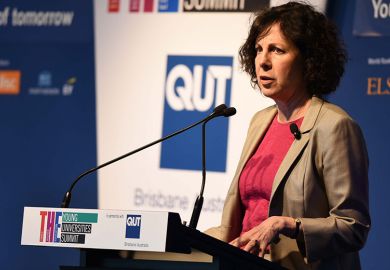The proportion of artificial intelligence researchers who are women is lower than it was two decades ago, a new study has revealed, adding to worries that potentially world-changing AI technology is not being built to cater to all parts of society.
Previous studies have found that the AI teams of companies such as Google and Facebook, as well as attendees at major conferences, are overwhelmingly male.
But a study released on 17 July by British innovation thinktank Nesta says that it is the first to look at a much bigger pool of AI researchers. It found a similarly unbalanced picture – which appears to be getting even more unequal.
“I was quite surprised about the fact that the situation...has gotten worse in some ways,” said Juan Mateos-Garcia, director of innovation mapping at Nesta, and an author of the report, A Study of Gender Diversity in AI Research. Twenty years ago, gender balance “was better than what we have now”, he said.
The share of female AI researchers publishing on the preprint database arXiv was higher in both the mid-1990s and shortly before 2010 – hitting 14 per cent at points – but has since declined to about 12 per cent, the report shows.
The fear is that a dearth of women in AI will lead the field to overlook sexist outcomes in the technology. One US-based image-recognition system learned to associate pictures of kitchens with women after it was fed a biased dataset of photos, Wired reported in 2017.
The field of AI has also failed to keep up with a rise in the proportion of female researchers across all research posted on arXiv, the report discovered.
Analysing keywords in research papers, Nesta also found that research with a female author was more likely to explore the social and political impact of new innovations in AI.
Hannah Owen, a member of Nesta’s education team, said that it was unclear exactly why women were more involved in these kinds of research questions.
“Are these people taking career choices because they are truly more interested in these topics?” she asked. It is possible that female researchers are being “pushed” into certain areas that were expected of them, she said.
The report also looked at which countries and institutions fared better or worse for employing female AI researchers. Argentina, the Netherlands and Denmark did best, while Finland, Singapore and particularly Japan had the lowest proportion of female AI researchers.
Universities appear to be doing slightly better than some private technology firms at employing female AI researchers, the study also finds.
Not one of Google, IBM or Microsoft could boast more than 15 per cent female researchers, it says. Some universities, on the other hand, did substantially better, with the University of Washington hitting a quarter.
The much-publicised “toxic culture” towards women in some technology firms is a “potential explanation” for this difference, said Mr Mateos-Garcia. But he cautioned that with so few private companies included in the data, it was hard to conclude whether universities really were doing better.
Register to continue
Why register?
- Registration is free and only takes a moment
- Once registered, you can read 3 articles a month
- Sign up for our newsletter
Subscribe
Or subscribe for unlimited access to:
- Unlimited access to news, views, insights & reviews
- Digital editions
- Digital access to THE’s university and college rankings analysis
Already registered or a current subscriber? Login






